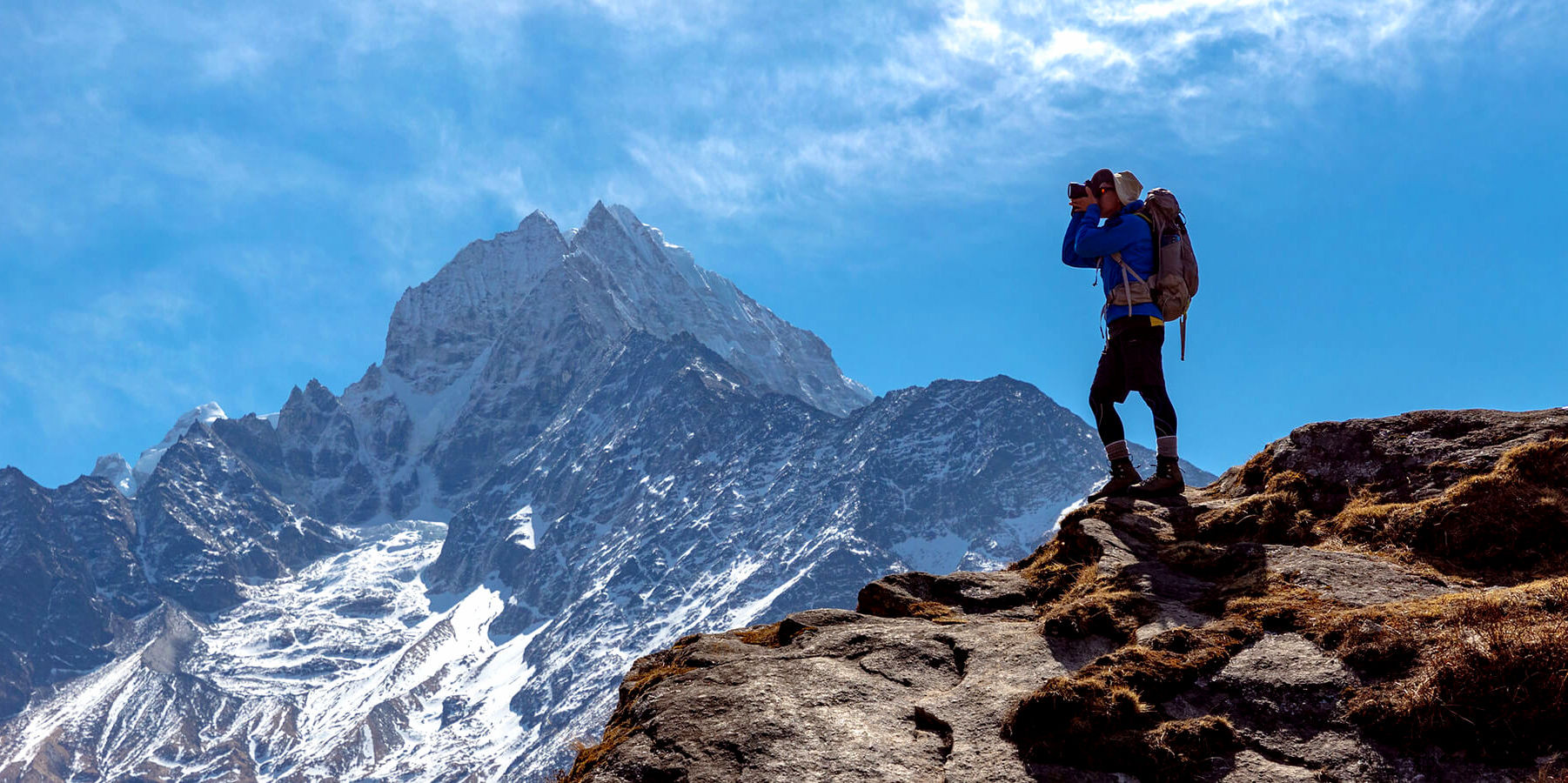Ghorepani Poon Hill Trek
The Ghorepani Poon Hill Trek is one of the most accessible and immensely popular short treks in Nepal, celebrated for its breathtaking mountain scenery and cultural insights. This trek is particularly famous for the spectacular sunrise views from Poon Hill, which offer panoramic vistas of the Annapurna and Dhaulagiri mountain ranges. Here's a detailed overview of what makes the Ghorepani Poon Hill Trek a must-do adventure:
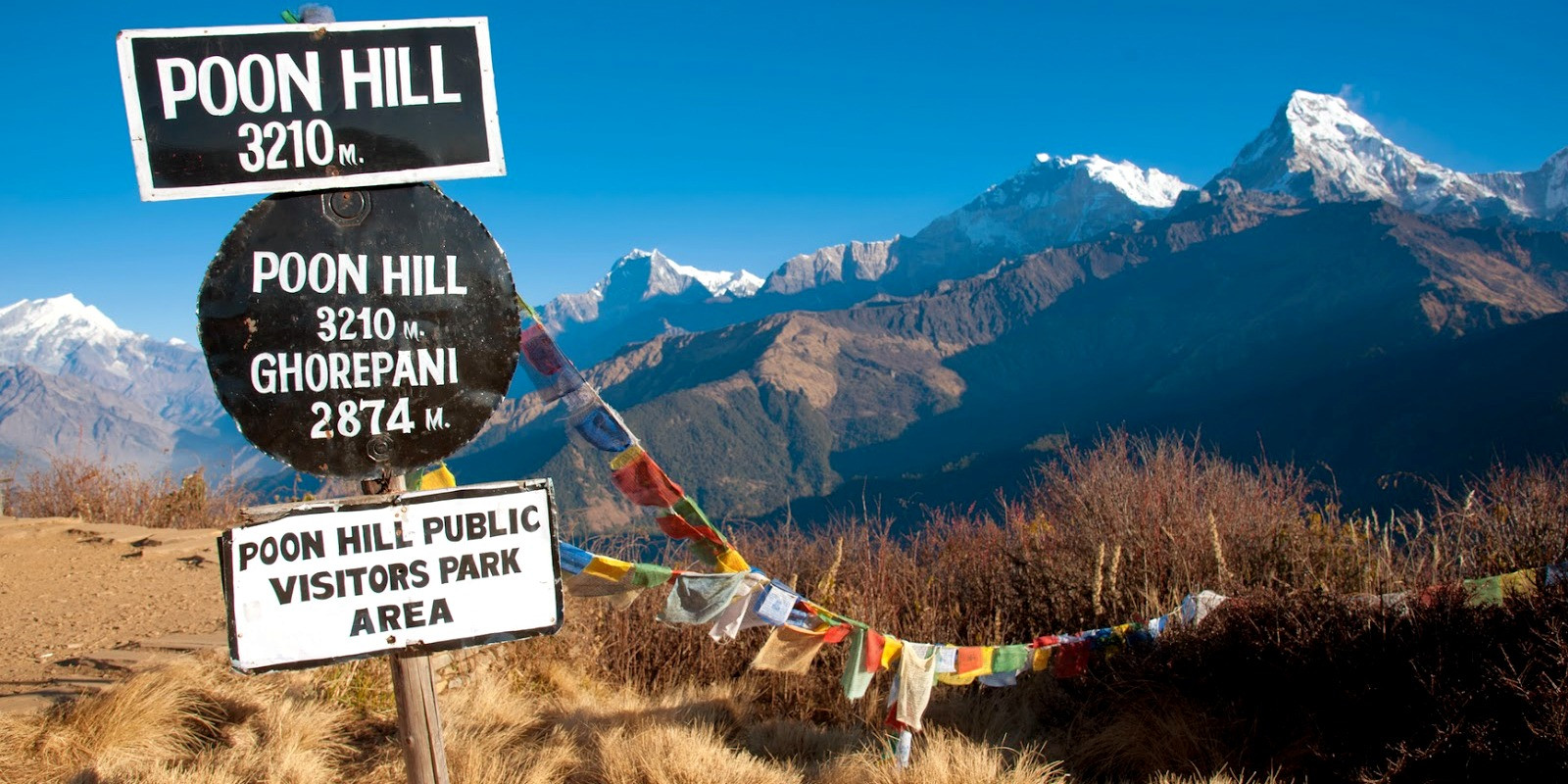
Key Highlights
-
Poon Hill Sunrise: Climbing Poon Hill early in the morning to witness the sunrise over the Himalayas is the defining feature of this trek. The viewpoint at 3,210 meters offers a 360-degree view of snow-capped peaks such as Annapurna South, Machhapuchhre (Fishtail), and Dhaulagiri.
-
Rhododendron Forests: The trek passes through dense forests of rhododendron, Nepal's national flower, which are in full bloom in the spring, creating a vibrant spectacle of red, white, and pink.
-
Gurung and Magar Villages: The trail meanders through traditional villages of the Gurung and Magar communities, providing trekkers with an opportunity to learn about local lifestyles and traditions.
Trek Overview
-
Duration: Typically 4-5 days, making it ideal for travellers with limited time but a strong desire to experience the Himalayan environment.
-
Difficulty: Moderate; the trek involves some steep sections but is generally considered suitable for beginners and those in fair physical condition.
-
Starting Point: The trek usually begins in Nayapul, about a one to two-hour drive from Pokhara, which serves as a gateway to the Annapurna region.
-
Route: From Nayapul, trekkers move to Tikhedhunga, ascend to Ulleri, and pass through Banthanti before reaching Ghorepani. After the early morning hike to Poon Hill, the return route can include a stop at Ghandruk, another picturesque village, offering a different route back to Nayapul.
At Relax Getaways, we offer personalized Ghorepani Poon Hill trek packages that cater to your needs and preferences, ensuring a safe, enjoyable, and unforgettable adventure in the Annapurna region. With our experienced guides and thoughtfully planned itineraries, you’re guaranteed a trek that not only highlights the natural beauty of Nepal but also respects and contributes positively to local communities.
Everest View Trek
The Everest View Trek is a spectacular short trek in the Nepalese Himalayas, providing stunning views of the world's highest peak without the need for an extended and strenuous journey to Everest Base Camp. This trek is ideal for those who have limited time but still want to experience the majesty of Mount Everest and the unique culture of the Sherpa people. Here’s an in-depth look at the Everest View Trek:
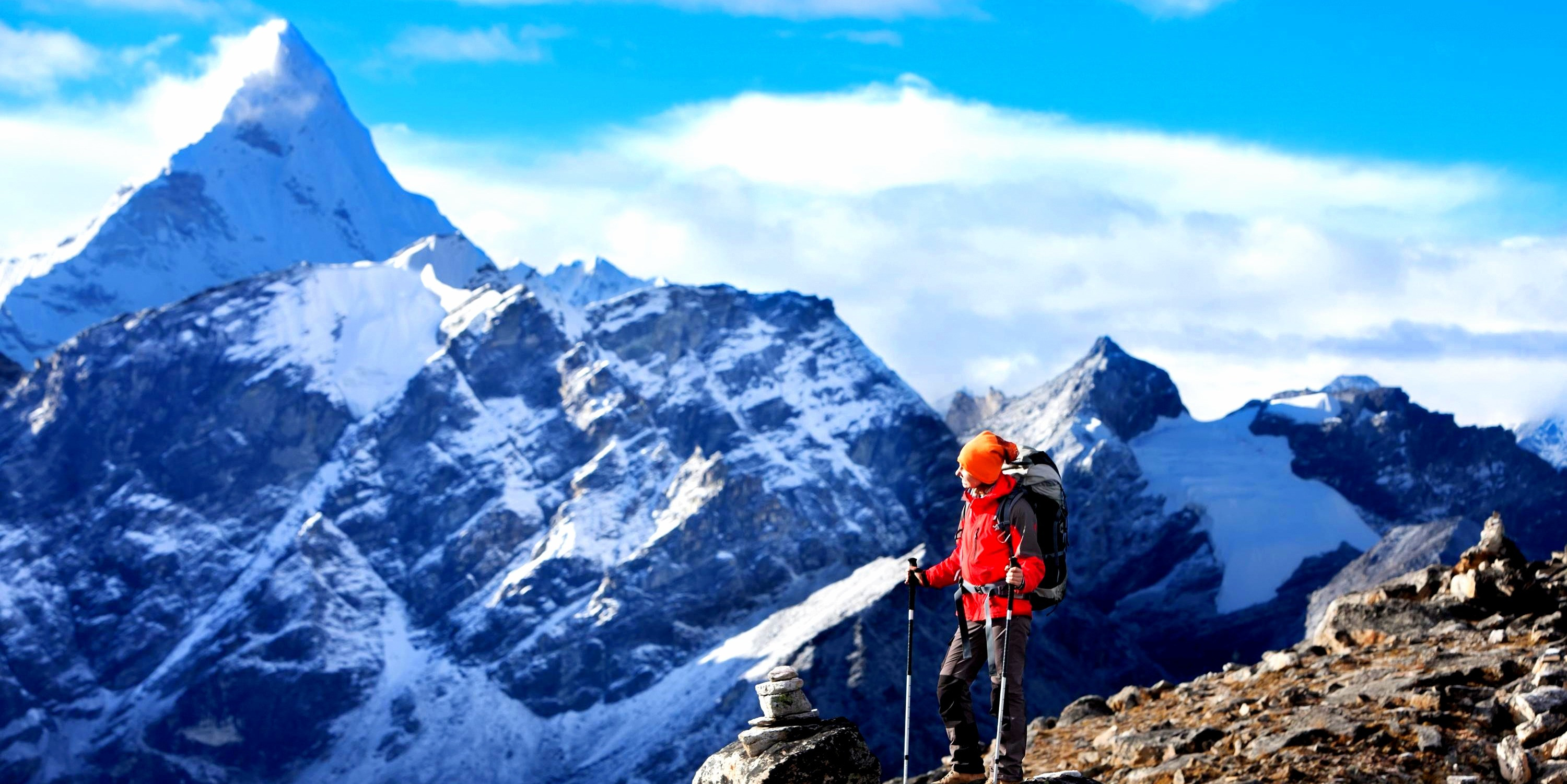
Key Highlights
-
Everest Panorama: One of the most compelling features of this trek is the opportunity to see Mount Everest and neighbouring peaks like Lhotse, Ama Dablam, and Thamserku from viewpoints such as Nagarkot and the famous Everest View Hotel.
-
Sherpa Culture: The trek passes through iconic Sherpa villages like Namche Bazaar, Khumjung, and Tengboche, offering insights into the rich culture and traditions of the Sherpa people, famous for their mountaineering prowess.
-
Tengboche Monastery: A visit to this historic monastery provides a spiritual dimension to the trek, with its stunning backdrop of Ama Dablam and Everest.
Trek Overview
-
Duration: Typically 5-7 days, making it an ideal choice for travellers who wish to soak in the Everest experience without the extended commitment.
-
Difficulty: Moderate; the trek involves some steep climbs and high altitudes but is manageable for those with general fitness.
-
Starting Point: The trek starts with a flight from Kathmandu to Lukla, a small town that serves as the gateway to the Everest region.
-
Route: From Lukla, trekkers proceed to Namche Bazaar, the bustling hub of the Khumbu region. After acclimatising in Namche, the trek continues to the villages of Khumjung and Tengboche before looping back to Lukla.
At Relax Getaways, we ensure that your Everest View Trek is seamless, safe, and deeply rewarding. Our expertly crafted itineraries provide ample time for acclimatisation and exploration, allowing you to enjoy the natural beauty and cultural richness of the Everest region comfortably. Our experienced guides are not only well-versed in the local terrain but are also deeply committed to providing insights into the Sherpa culture, enhancing your trekking experience. Join us for an unforgettable journey to see the top of the world up close!
Annapurna Base Camp Trek
The Annapurna Base Camp Trek is one of the most popular and scenic treks in Nepal, leading adventurers right into the heart of the majestic Annapurna range. This trek is an incredible journey through diverse landscapes, from lush subtropical forests to high-altitude landscapes, all while offering close-up views of some of the highest peaks in the world, including Annapurna I, Annapurna South, Machhapuchhre, and Hiunchuli. Here’s what makes the Annapurna Base Camp Trek a must-do for any trekking enthusiast:
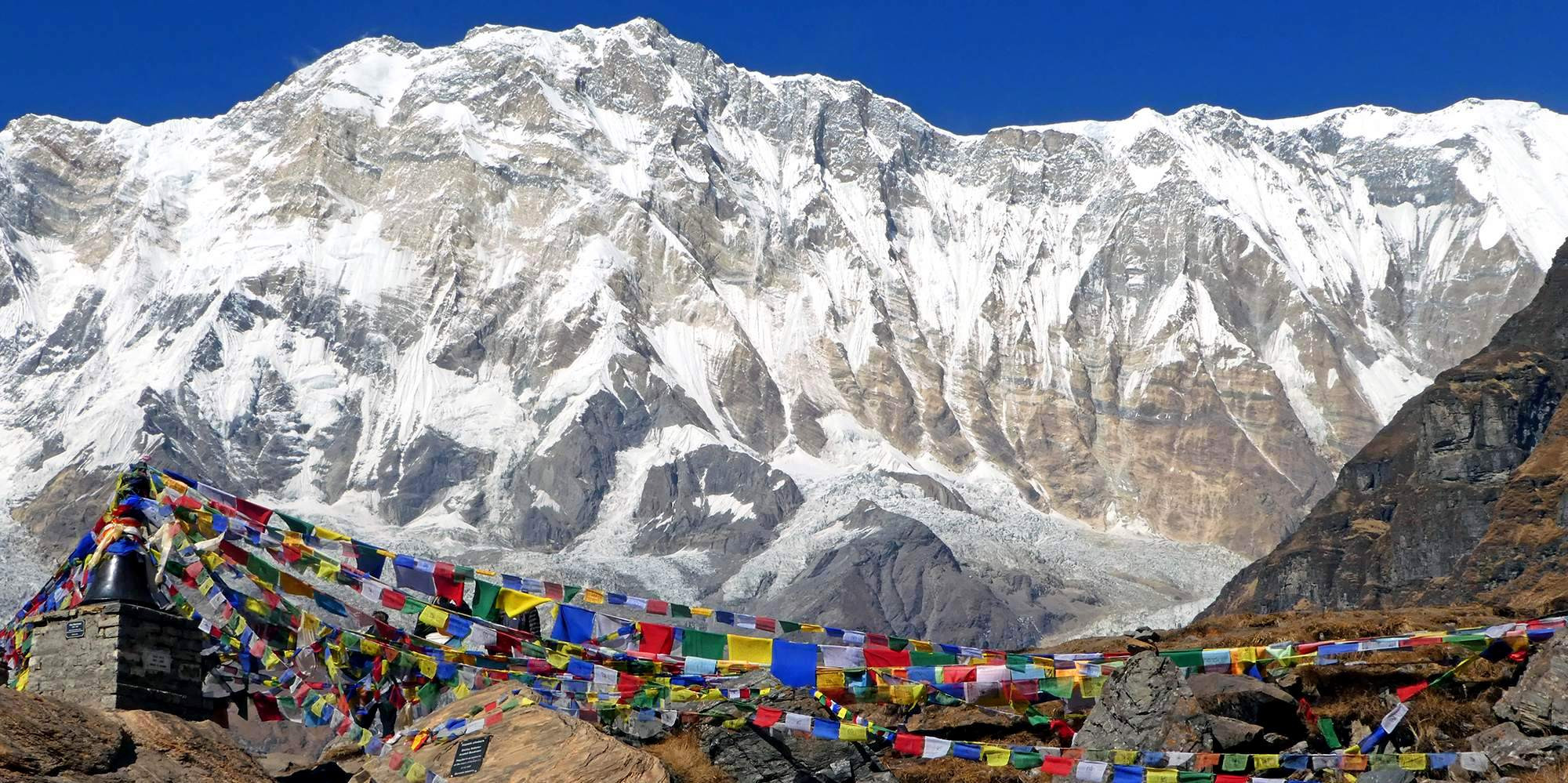
Key Highlights
-
Spectacular Mountain Views: Trek to the base of the 10th highest mountain in the world, Annapurna I, and surround yourself with a spectacular 360-degree mountain panorama at Annapurna Base Camp.
-
Diverse Ecosystems: The trek passes through a variety of ecosystems, from rice paddies and rhododendron forests to alpine meadows and glacial zones.
-
Hot Springs at Jhinu Danda: After days of trekking, relax in the natural hot springs located near Jhinu Danda, a perfect way to soothe sore muscles.
-
Machhapuchhre Base Camp: Another highlight is the opportunity to stay at the base camp of Machhapuchhre (Fishtail Mountain), known for its unique fishtail shape.
Trek Overview
-
Duration: Typically 7-12 days, depending on the chosen route and pace of trekking.
-
Difficulty: Moderate to challenging; involves steady climbs and high altitudes, suitable for trekkers who are in good physical condition.
-
Starting Point: The trek usually starts in Pokhara, a beautiful lakeside city that offers many additional recreational opportunities.
-
Route: The most common route takes trekkers from Nayapul to Tikhedhunga, Ghorepani, Tadapani, Chhomrong, then through the Modi Khola Valley up to Annapurna Base Camp, with a return via Jhinu Danda for a relaxing dip in the hot springs.
At Relax Getaways, we offer comprehensive packages for the Annapurna Base Camp Trek that include experienced guides, porters, accommodation, and meals. We take care of all the logistics so you can focus on enjoying the breathtaking scenery and cultural experiences. Our guides are local experts, knowledgeable in the terrain and culture, ensuring a safe and enriching trekking experience. Join us to explore the stunning beauty of the Annapurna region in comfort and safety.
Mardi Himal Trek
The Mardi Himal Trek is a hidden gem among the trekking routes in Nepal, offering a quieter but no less spectacular alternative to the more frequented trails in the Annapurna region. This trek provides a short, sharp, and intimate experience of the Himalayas, with close-up views of Mardi Himal, Machhapuchhre (Fishtail Mountain), and Annapurna South. The Mardi Himal Trek is perfect for those looking to experience the raw beauty of the Himalayas in a more secluded setting. Here’s what you need to know about this remarkable trek:
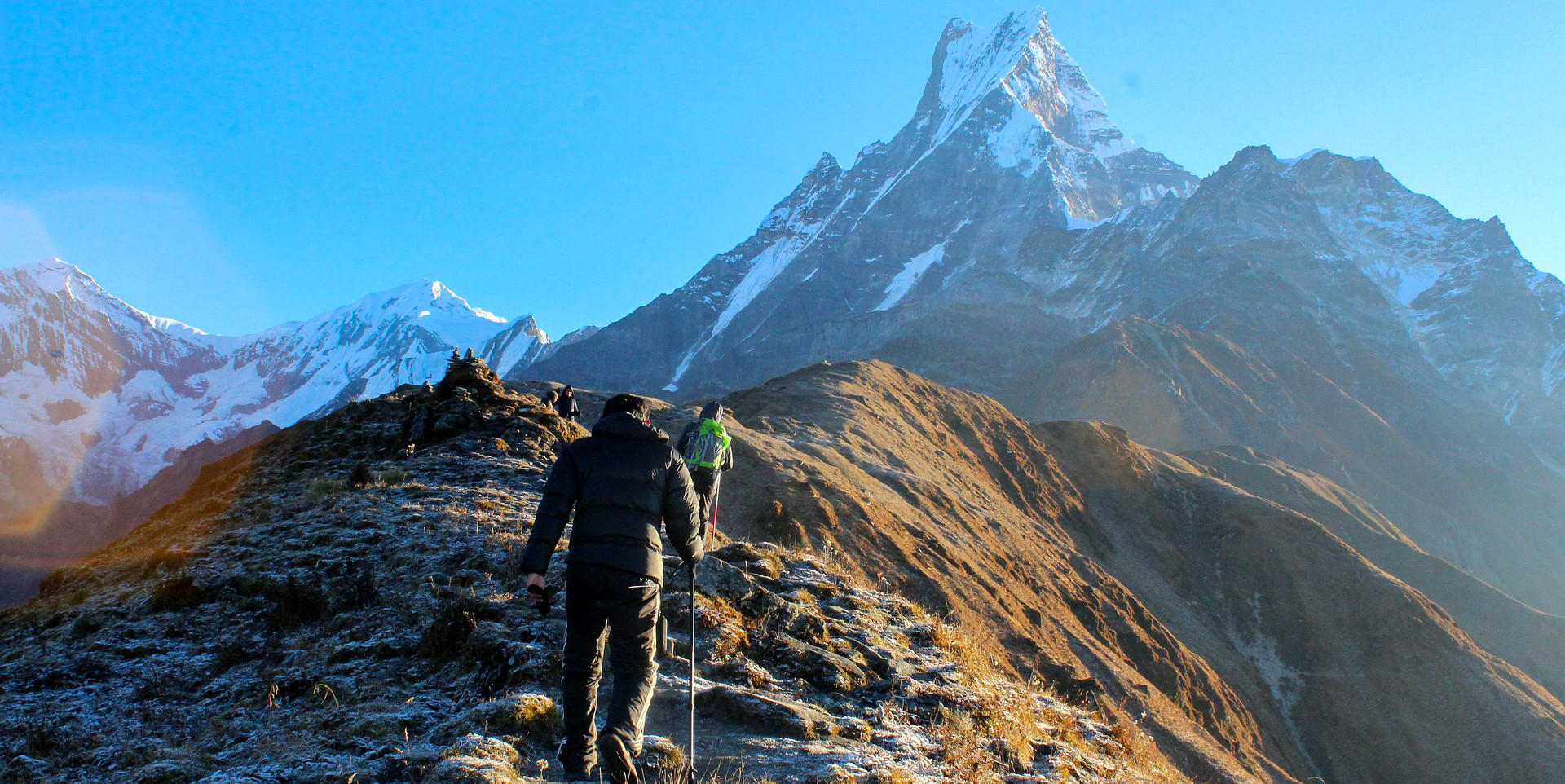
Key Highlights
-
Stunning Mountain Views: The trek provides exceptional views of Mardi Himal, Annapurna South, Hiunchuli, Machhapuchhre, and the deep valleys below.
-
Off the Beaten Path: Less crowded than its counterparts, this trek offers a peaceful experience amidst pristine nature.
-
Forest Camp to High Camp: The journey from the lush rhododendron forests at lower elevations up to the rocky mountain terrain of High Camp is both challenging and rewarding.
Trek Overview
-
Duration: Typically 4-6 days, making it ideal for those with limited time but eager for an authentic Himalayan adventure.
-
Difficulty: Moderate; while it is not as long as some other treks, it involves steep ascents and high altitudes.
-
Starting Point: The trek usually begins at Kande after a short drive from Pokhara.
-
Route: From Kande, trekkers move up to Forest Camp, then on to Low Camp and High Camp, with an optional day hike to Mardi Himal Base Camp for breathtaking close-up views of the surrounding peaks.
At Relax Getaways, we specialise in providing unique and immersive trekking experiences. Our Mardi Himal Trek packages are designed to offer you a blend of adventure, solitude, and safety. We ensure that all logistical aspects of your trek are handled professionally, from expert guides who are familiar with the terrain to high-quality accommodations and transportation. Trek with us to experience the magic of Mardi Himal in a way that prioritises environmental conservation and local community benefits. Join us for an unforgettable adventure that combines the thrill of exploration with the tranquillity of nature.
Langtang Valley Trek
The Langtang Valley Trek is a compelling journey into one of the closest trekking destinations from Kathmandu, offering an exquisite blend of natural beauty and cultural richness. Nestled between the main Himalayan range to the north and a slightly lower range of snowy peaks to the south, this trek leads you through the Langtang National Park, home to mountains and a diverse range of wildlife. The trek not only showcases stunning landscapes but also offers a peek into the lives of the Tamang people who call this region home.
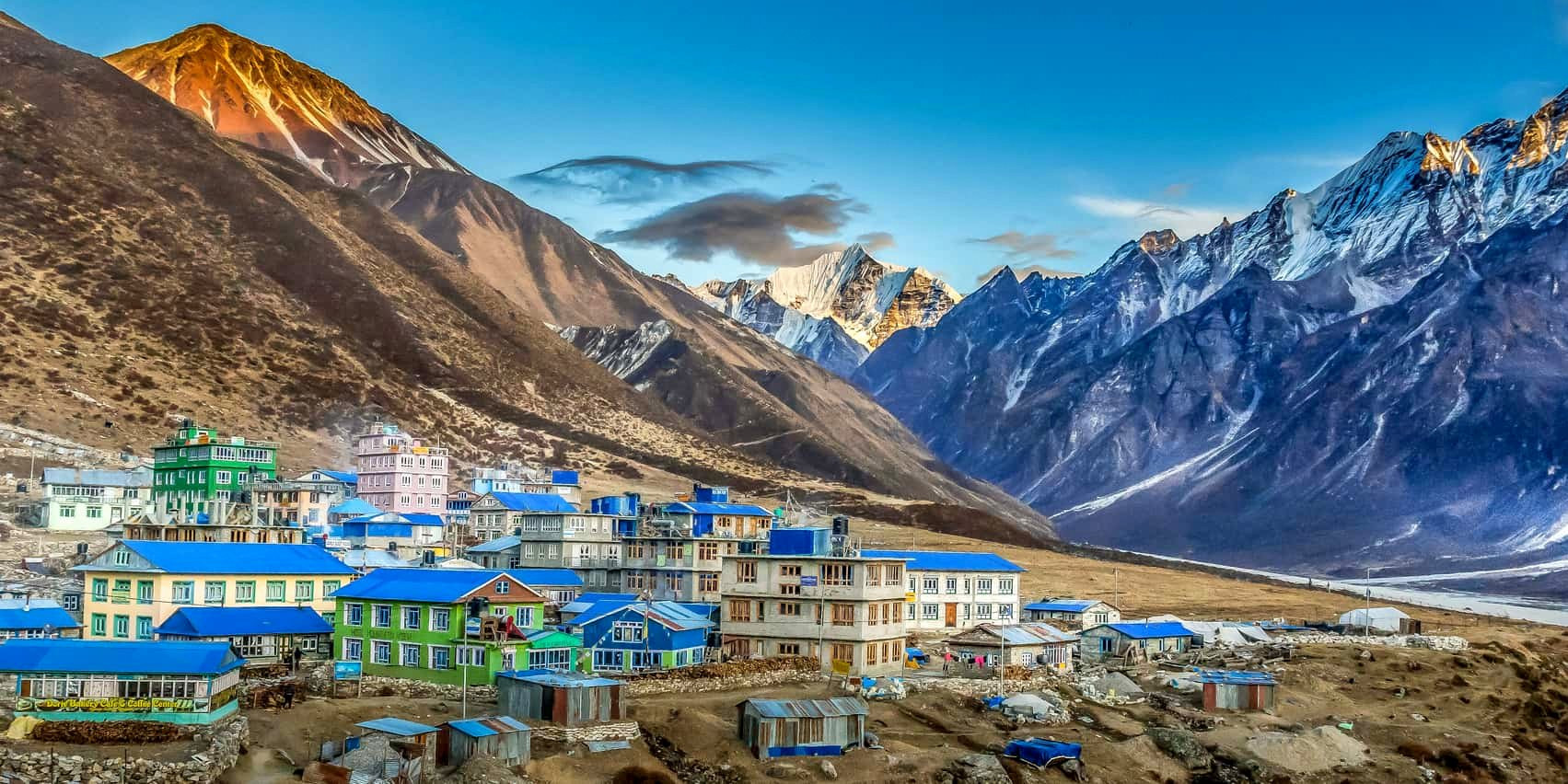
Key Highlights
-
Scenic Landscapes: The trek offers dramatic views of Langtang Ri, Langtang Himal, Langsisa pass, and Ganjala Peak.
-
Rich Biodiversity: Langtang National Park is a habitat for numerous wildlife species, including the rare red panda.
-
Cultural Experience: Experience the unique culture of the Tamang people, with their Tibetan origins and rich traditions, reflected in their crafts, music, dances, and monasteries.
-
Kyanjin Gompa: A visit to this ancient Buddhist monastery is a spiritual highlight, surrounded by mountains and often used as a base for further exploration and acclimatisation.
Trek Overview
-
Duration: Typically 7-9 days, making it perfect for trekkers who want a deeper exploration without the time commitment of longer Himalayan treks.
-
Difficulty: Moderate; the trek involves long walks in a high-altitude environment but does not require technical climbing skills.
-
Starting Point: The journey usually begins with a drive from Kathmandu to Syabrubesi, the starting point of the trek.
-
Route: From Syabrubesi, trekkers ascend to Lama Hotel, continue to Langtang village, and finally reach Kyanjin Gompa. Many opt to spend a day here for acclimatisation and local exploration before retracing their steps back to Syabrubesi.
At Relax Getaways, we offer tailored Langtang Valley trek packages that cater to your preferences and ensure safety, comfort, and a deeply enriching Himalayan experience. Our local guides are from the region, providing genuine insights into the local culture and natural environment. We prioritise eco-friendly practices to preserve the pristine conditions of the landscapes we explore. Trek with us to discover the enchanting Langtang Valley, where every step brings a new perspective and every view is a memory in the making.
Kalinchwok Trek
The Kalinchwok Trek is an excellent choice for those looking to experience both adventure and spirituality within a short time frame. Located relatively close to Kathmandu, this trek offers a wonderful blend of natural beauty, cultural richness, and religious significance, centered around the revered Kalinchwok Bhagwati Temple at the summit. Ideal for a weekend getaway, the Kalinchwok Trek provides stunning panoramic views of the Himalayan range and an authentic taste of rural Nepalese life.
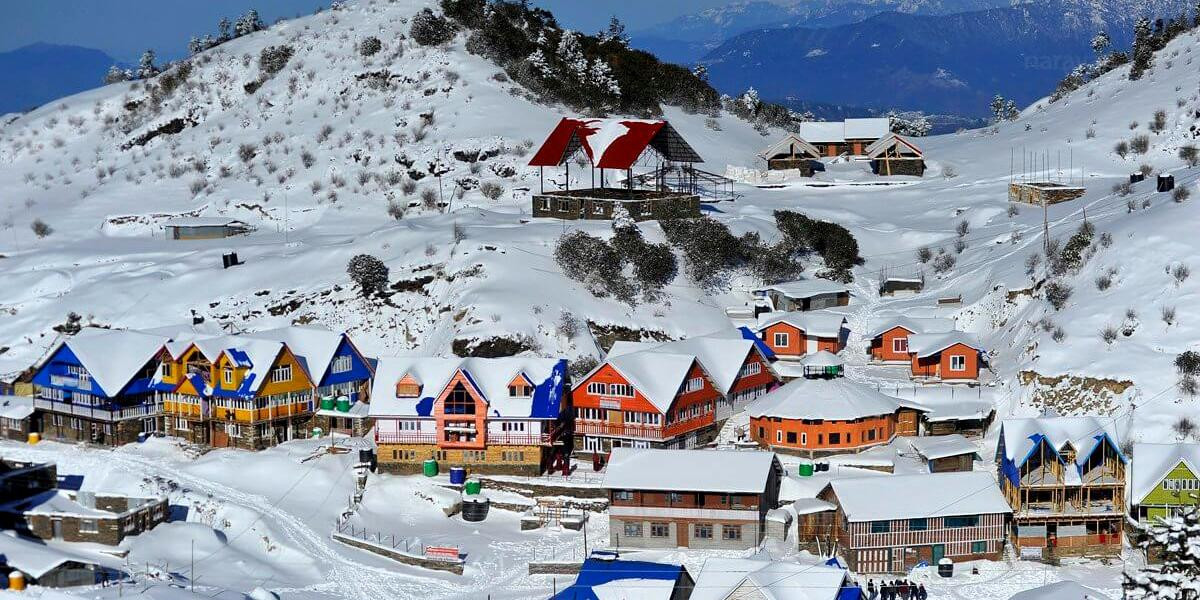
Key Highlights
-
Kalinchwok Bhagwati Temple: Situated at an altitude of about 3,842 meters, the temple is a major highlight and a pilgrimage site dedicated to the goddess Kali. It attracts many visitors for both its religious significance and its breathtaking location.
-
Panoramic Views: From the summit, trekkers can enjoy expansive views of the Himalayas, including Gaurishankar, Jugal, and Langtang ranges.
-
Cultural Experience: The trek passes through several small villages and settlements, offering insights into the life and traditions of local ethnic groups such as the Tamang and Sherpa communities.
Trek Overview
-
Duration: Typically 2-3 days, making it an ideal choice for those with limited time but a desire for a high-altitude trekking experience.
-
Difficulty: Moderate; the trek involves a steep climb to the temple, suitable for those with a reasonable level of fitness.
-
Starting Point: The trek starts with a drive from Kathmandu to Charikot or Kuri village, from where the actual trekking begins.
-
Route: The trail from Kuri village to the temple is well-marked and steep, often covered in snow during the winter, adding to the adventure and scenic beauty of the trek.
Relax Getaways offers expertly curated Kalinchwok Trek packages that include transportation, accommodation, meals, and guided tours. Our experienced guides ensure a safe and enjoyable trekking experience, emphasising both the adventure and the spiritual aspects of the journey. We handle all logistics so you can focus on enjoying the stunning landscapes and rich cultural interactions. Choose Relax Getaways for a memorable and hassle-free trekking experience to Kalinchwok, where the divine meets the majestic in the heart of Nepal’s Himalayas.
Balthali Village Trek
The Balthali Village Trek is a delightful short trek that offers a tranquil escape into the picturesque landscapes and rural tranquility of Nepal, just a short distance from the bustling city of Kathmandu. This trek is perfect for those looking to experience the peacefulness of Nepalese countryside life and enjoy panoramic views of verdant valleys and majestic Himalayan peaks. Its ease and accessibility make it an ideal choice for families, beginners, or those looking for a brief yet enriching trekking experience.
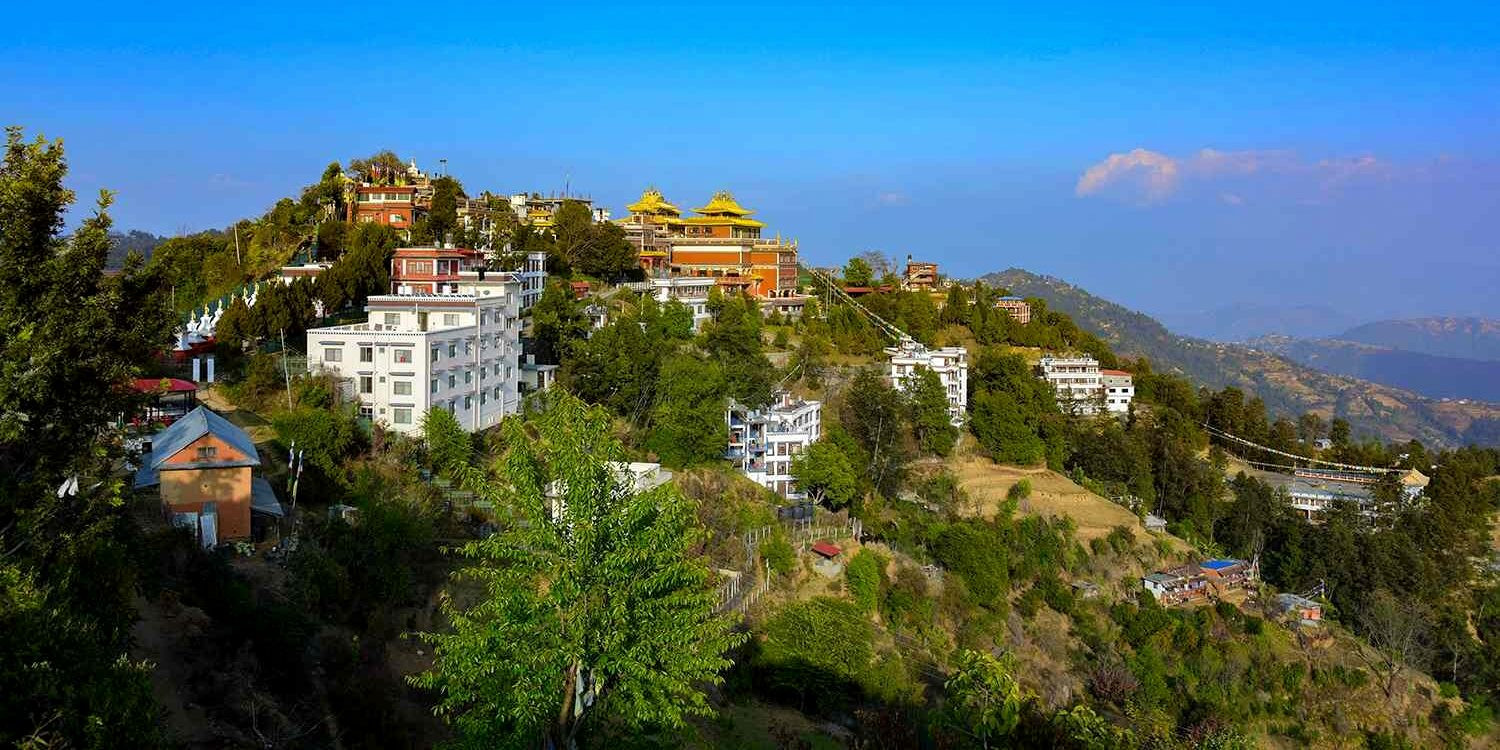
Key Highlights
-
Scenic Beauty and Tranquillity: Balthali stands out with its lush green fields, vibrant forests, and a panoramic vista of the Himalayas, including Mt. Everest on clear days.
-
Cultural Richness: The trek offers a close look at rural Nepalese life, as Balthali is a quaint village largely untouched by modernity, where traditional homes and ways of living are still prevalent.
-
Variety of Flora and Fauna: The area around Balthali is known for its rich biodiversity, including a variety of bird species, making it a great spot for bird watching.
Trek Overview
-
Duration: Typically 1-2 days, making it perfect for a weekend getaway or as an addition to a longer Nepal trip.
-
Difficulty: Easy; this trek is suitable for all ages and fitness levels, including families with children.
-
Starting Point: The trek often begins at Namo Buddha, a sacred Buddhist site, after a short drive from Kathmandu.
-
Route: From Namo Buddha, trekkers walk to Balthali via Panauti, a historically rich town known for its ancient temples and architecture, making the trek both scenic and culturally enriching.
At Relax Getaways, we specialise in providing a tailored trekking experience that combines natural beauty, cultural insights, and comfort. Our Balthali Village Trek packages are designed to cater to trekkers looking for a less strenuous yet deeply fulfilling experience. We ensure that you have the opportunity to engage with local communities, enjoy the natural environment, and relax in comfortable accommodations. Our experienced guides are committed to making your trek both enjoyable and enlightening. Choose Relax Getaways for a memorable journey through the enchanting landscapes and vibrant cultures of Nepal.
Tamang Heritage Trail
The Tamang Heritage Trail is a fascinating trek that offers an in-depth look into the rich culture and daily life of the Tamang people, an indigenous community in Nepal. Situated in the Langtang region, this trail is less trodden compared to the more popular Langtang Valley Trek, providing a more authentic and serene experience. The trek not only showcases the stunning landscapes and biodiversity of the area but also highlights the unique Tamang culture, which has retained much of its traditional Tibetan heritage.

Key Highlights
-
Cultural Immersion: Engage directly with the Tamang people, experiencing their hospitality, customs, traditional dances, and music.
-
Natural Hot Springs: Relax in the natural hot springs at Tatopani, believed to have healing properties, which offer a perfect respite after days of trekking.
-
Scenic Beauty: Enjoy the beautiful landscapes featuring terraced fields, dense forests, and panoramic views of the snow-capped Himalayas, including Langtang Lirung and Ganesh Himal.
Trek Overview
-
Duration: Typically 5-7 days, suitable for those who want to combine cultural exploration with moderate trekking.
-
Difficulty: Moderate; the trail includes some steep sections but is generally manageable for trekkers with average fitness levels.
-
Starting Point: The trek begins at Syabrubesi, a common starting point for several treks in the Langtang region.
-
Route: The trail loops from Syabrubesi through Gatlang, Tatopani, Thuman, Timure, and Briddim, offering a circuit that is rich in cultural encounters and scenic vistas.
At Relax Getaways, we are deeply committed to providing an authentic and respectful cultural experience. Our Tamang Heritage Trail packages are carefully crafted to ensure that you not only enjoy the natural beauty of the region but also gain genuine insights into the lives of the Tamang people. We work closely with local communities to support and promote sustainable tourism practices that benefit both visitors and hosts. Our knowledgeable guides are locals from the region, offering you an insider’s perspective and a more personal connection to the area you’re exploring. Choose Relax Getaways for a trek that's as enriching as it is beautiful, where every step brings a new story.
Helambu Trek
The Helambu Trek is a delightful journey close to the Kathmandu Valley, offering a splendid mix of natural beauty, cultural richness, and convenient accessibility. This trek is particularly appealing for those looking to experience authentic Himalayan culture and stunning landscapes without venturing too far from the capital. Known for its scenic vistas, charming villages, and less crowded paths, the Helambu Trek is an excellent choice for both novice and experienced trekkers.
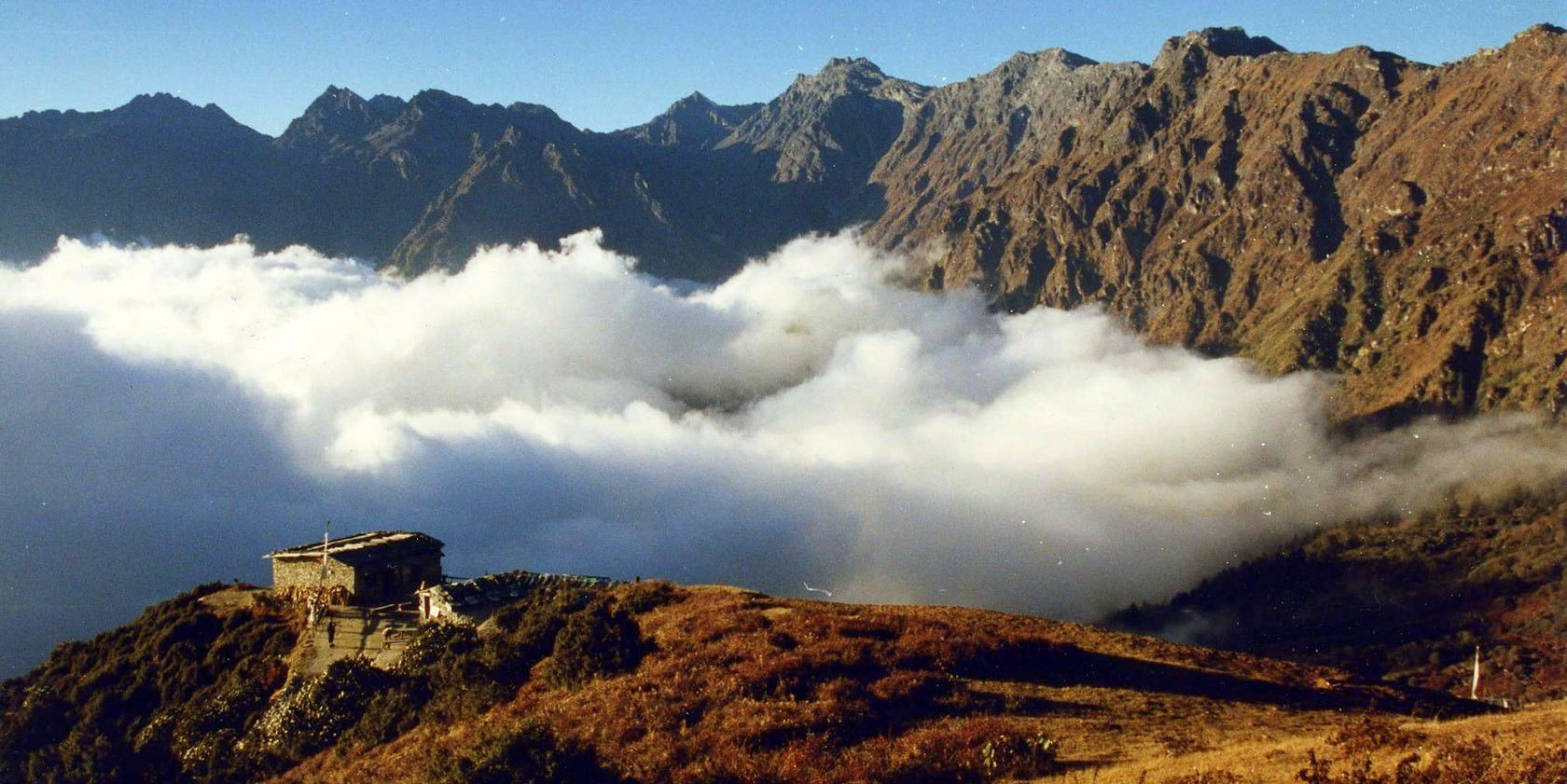
Key Highlights
-
Cultural Diversity: The trail goes through various Sherpa and Tamang villages, where trekkers can witness the daily lives and cultural practices of these communities.
-
Scenic Beauty: Offers views of majestic peaks such as Langtang Lirung, Ganesh Himal, and Gauri Shankar.
-
Rich Biodiversity: The trek passes through lush forests of rhododendron, bamboo, and oak, which are home to an array of bird species and other wildlife.
Trek Overview
-
Duration: Typically 3-5 days, making it an ideal trek for those with limited time but a desire to experience genuine Himalayan trekking.
-
Difficulty: Moderate; the trek includes some steep sections but is generally considered less strenuous than other Himalayan treks.
-
Starting Point: The trek starts at Sundarijal, which is a short drive from Kathmandu, making it very accessible.
-
Route: From Sundarijal, the trail ascends to Chisapani, Kutumsang, Thadepati, and Sermathang, before concluding at Melamchi Pul Bazar.
At Relax Getaways, we specialise in providing tailored trekking experiences that cater to the preferences and abilities of our clients. Our Helambu Trek packages are designed to offer you a seamless trekking experience that combines cultural immersion with natural exploration. With expert local guides from the region, we ensure that you not only see the beauty of the Himalayas but also understand and appreciate the way of life of the local communities. Our commitment to responsible and sustainable travel practices means that your trekking adventure contributes positively to the preservation of the natural and cultural heritage of the areas we visit. Choose Relax Getaways for an enriching and memorable trekking experience in the beautiful Helambu region.
The Royal Trek
The Royal Trek is one of the shortest treks in the Annapurna region of Nepal, named after Prince Charles of Britain and his entourage who explored this route in the early 1980s. This trek is known for its relatively low difficulty level and the beautiful, panoramic views of the mountains it offers without requiring trekkers to ascend to high altitudes. It's an excellent choice for beginners or those who wish to avoid the more crowded trekking routes.
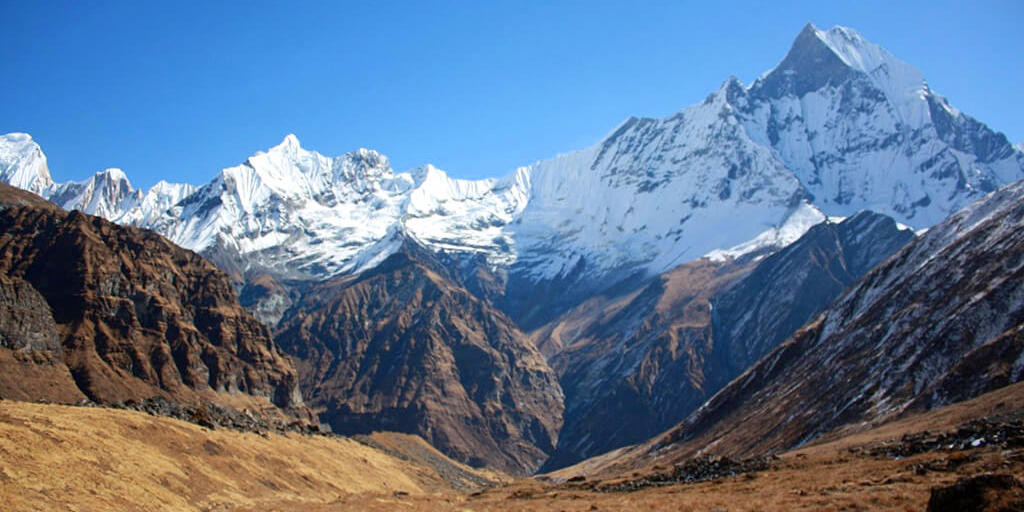
Key Highlights
-
Panoramic Mountain Views: Offers splendid views of Annapurna South, Machhapuchhre (Fishtail), Annapurna II, and Lamjung Himal.
-
Cultural Insight: The trek passes through various Brahmin and Chhetri villages, providing insights into the rural lifestyle and cultural traditions of these communities.
-
Scenic Beauty: The route is dotted with lush forests, terraced fields, and hilltop ridges offering picturesque landscapes.
Trek Overview
-
Duration: Typically 3-5 days, making it ideal for those looking for a quick and relatively easy trekking experience.
-
Difficulty: Easy to moderate; the Royal Trek does not involve significant altitude gains, making it accessible for most fitness levels.
-
Starting Point: The trek usually begins near Pokhara, at a village called Bijayapur Khola, and ends in the beautiful Begnas Lake area.
-
Route: The path leads north from Pokhara towards Kalikasthan, then passes through Syaklung and Chisapani before concluding near Begnas Lake.
Choosing Relax Getaways for your Royal Trek means enjoying a well-organised and guided trek that maximises comfort and safety. Our knowledgeable guides ensure you get the most out of the trek’s cultural and natural highlights while supporting you through the journey with expert guidance and assistance. We provide all necessary logistics, from transport to accommodations, allowing you to immerse yourself fully in the experience without any hassle. Join us to explore this royal path and create lasting memories in the heart of the Annapurna region.
Tips for 10 Most Popular Short Treks in Nepal
The 10 most popular short treks in Nepal are an exhilarating adventure that requires both preparation and an understanding of the environment you'll be entering. Here are some essential tips to help ensure you have a safe, enjoyable, and memorable trekking experience:
-
Acclimatise Properly: High altitude sickness is a risk in the mountains. Take it slow, especially on treks that climb above 2,500 meters. Allow your body time to adjust to the altitude.
-
Pack Smart: Bring layers of clothing to accommodate varying temperatures. Include waterproof and windproof gear, a good quality sleeping bag, and comfortable, broken-in hiking boots.
-
Stay Hydrated: Drink plenty of water to stay hydrated. Dehydration can make you more susceptible to the effects of altitude and fatigue.
-
Hire Local Guides and Porters: Local guides not only enhance your trekking experience by providing insight into the local culture and natural landscape, but they are also invaluable in case of emergencies.
-
Respect Local Customs and Traditions: Nepal’s trails pass through diverse ethnic communities. Showing respect for local customs and traditions will enrich your interaction and help create a mutually positive experience.
-
Be Prepared for Weather Changes: Mountain weather is notoriously unpredictable. Check the weather forecasts and be prepared for sudden changes.
-
Travel Insurance: Make sure you have travel insurance that covers trekking activities, including evacuation in case of emergency.
-
Carry Local Currency: Not all places will have ATMS, and smaller villages might not accept cards. Carrying local currency will help you pay for services and small purchases directly.
-
Keep Your Load Light: On shorter treks, you can often get away with carrying less, so evaluate what you truly need. For guided treks, remember that hiring porters can provide a livelihood for local people, but ensure they are treated and paid fairly.
-
Protect the Environment: Stick to marked trails to minimise impact on the environment, carry out all your trash, and consider using eco-friendly products.
-
Check Permits and Regulations: Some treks require permits and TIMS (Trekkers' Information Management System) cards. Make sure you have all necessary documentation before starting your trek.
-
Be Prepared for Basic Conditions: Accommodations on trekking routes vary in comfort. Prepare to rough it out sometimes with basic lodgings and shared facilities.
-
Start Early: Starting your daily trek early can help you make the most of the daylight hours, enjoy the best views before afternoon clouds roll in, and select the best spot at teahouses.
-
Keep Communication Lines Open: Carry a local SIM card for areas with cell service. For remote areas, consider renting a satellite phone.
-
Enjoy Every Moment: Lastly, while being prepared is crucial, don't forget to enjoy your trek. Take time to soak in the views, interact with locals, and capture memories.
By following these tips, you'll be well on your way to a successful and enjoyable trek in the stunning landscapes of Nepal.
Ideal Time for 10 Most Popular Short Treks in Nepal
When planning a trek in Nepal, timing is crucial to ensure you experience the best weather conditions and views. The ideal time for trekking in Nepal, particularly for the most popular short treks, largely depends on two main trekking seasons: spring and autumn. Here's a detailed look at these seasons:
Spring (March to May)
-
Weather: The spring season is characterised by warmer weather and progressively clearer skies as winter fades. Temperatures are comfortable during the day for trekking, although nights can still be chilly, especially at higher altitudes.
-
Visibility: As the season progresses, the visibility improves, making May one of the best months for clear views of the Himalayas.
-
Nature: This is also the time when the hillsides and lower mountain slopes are vibrant with blooming rhododendrons and other wildflowers, adding spectacular colours to the trek.
-
Advantages: Besides the scenic beauty, spring is less crowded compared to the peak of the autumn season, offering a somewhat more peaceful trekking experience.
Autumn (September to November)
-
Weather: Autumn is considered the best trekking season in Nepal due to stable weather and moderate temperatures. The monsoon rains have cleared the dust from the air, and the skies are usually crystal clear.
-
Visibility: Visibility is at its peak, offering uninterrupted views of the mountain ranges, which makes it ideal for photography and long-distance viewing.
-
Nature: The landscapes are lush and green after the monsoon season, providing vibrant scenery.
-
Advantages: The weather is generally reliable with little precipitation, and the daytime temperatures are perfect for trekking. Also, major festivals like Dashain and Tihar fall during this time, adding cultural richness to your trekking experience.
Other Considerations
-
Monsoon (June to early September): Trekking during the monsoon is generally avoided due to heavy rains, slippery trails, leeches, and obscured mountain views. However, rain-shadow areas like Upper Mustang and parts of the Annapurna circuit remain viable options.
-
Winter (December to February): Winter can be a good time for certain short treks that don’t reach extreme altitudes, such as the Poon Hill Trek or lower parts of the Annapurna region. Expect colder conditions, snow at higher elevations, and fewer trekkers.
For the best overall conditions, aiming for either late spring (April-May) or mid-autumn (October-November) is ideal. These periods offer the best combination of weather, visibility, and natural beauty. Each trek might have specific best times depending on altitude and location, so it's always a good idea to check the specifics of the trek you are interested in.
For both novice and seasoned trekkers, the ten favourite short treks in Nepal provide a wide range of encounters appropriate. Poon Hill's stunning sunrises and the Tamang Heritage Trail's diverse cultural fabric together provide a nice photo of Nepal's natural beauty and cultural wealth in only a few days. Perfect for people with little time, these tours also help local economies and encourage sustainable travel. Deciding on spring and fall, the best times for a remarkable and enlightening trip, guarantees the greatest conditions regardless of whether you take the tranquil trails of the Helambu Trek or the bold ones of the Mardi Himal.
FAQs for 10 Most Popular Short Treks in Nepal
Q: What is the best time to go on these treks?
A: The optimal trekking seasons are spring (March to May) and autumn (September to November), when the weather is stable and the views are clear.
Q: Do I need a guide for short treks in Nepal?
A: A guide is not mandatory for all treks but is highly recommended. Guides provide valuable insights into local culture, assist with navigation, and can be invaluable in emergencies.
Q: Are permits required for these treks?
A: Yes, most treks require a TIMS (Trekkers' Information Management System) card and specific area permits like the Annapurna Conservation Area Permit (ACAP) or the Langtang National Park permit.
Q: What should I pack for a short trek in Nepal?
A: Essential items include hiking boots, layered clothing, a rain jacket, water purification tools, a first aid kit, and sunscreen. Light packing is advisable as you will carry your backpack throughout the trek.
Q: How fit do I need to be to undertake these treks?
A: You should have a moderate level of fitness. Some treks involve steep climbs and high altitudes, requiring good physical condition.
Q: What are the accommodation options on these treks?
A: Teahouses and lodges are available along most popular trek routes, offering basic to comfortable accommodations and meals.
Q: Can I trek solo in Nepal?
A: Trekking solo is possible but trekking with at least one companion or in a group is recommended for safety, especially in remote areas.
Q: How can I deal with altitude sickness?
A: Prevent altitude sickness by ascending gradually, staying hydrated, eating carbohydrates, and avoiding alcohol. Descend immediately if symptoms appear and worsen.
Q: Are there any cultural customs I should be aware of while trekking?
A: Dress modestly, remove shoes before entering sacred places, greet locals respectfully, and ask for permission before taking photographs.
Q: What is the average cost of these treks?
A: Costs vary, but generally, expect to spend between $20 to $50 per day, depending on trek length, accommodation standards, whether you hire a guide or porter, and personal spending habits.
For the Nepal tour, please click here.
If you are looking for different kinds of Nepal Tours or Trekking Packages, feel free to contact us.
